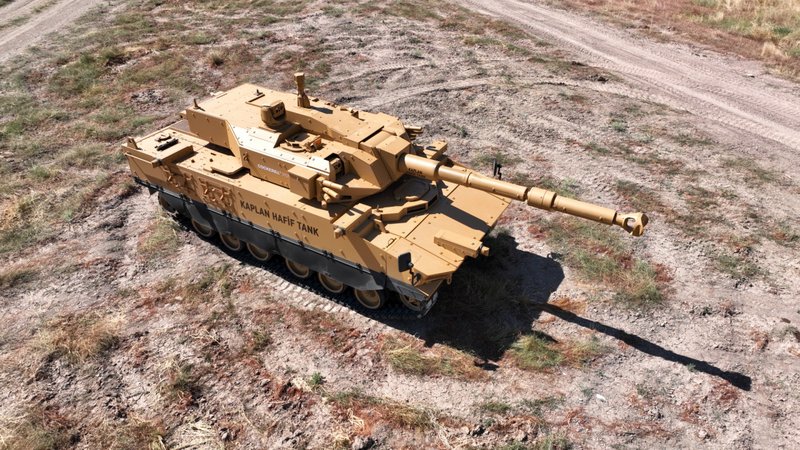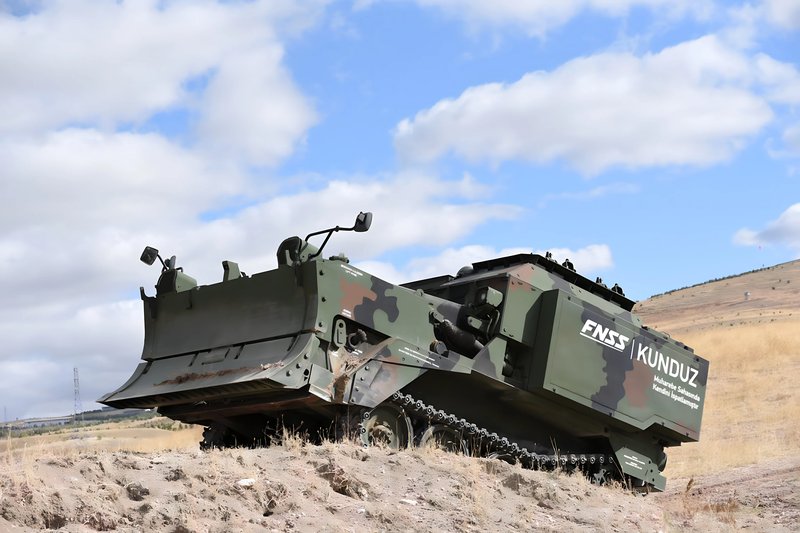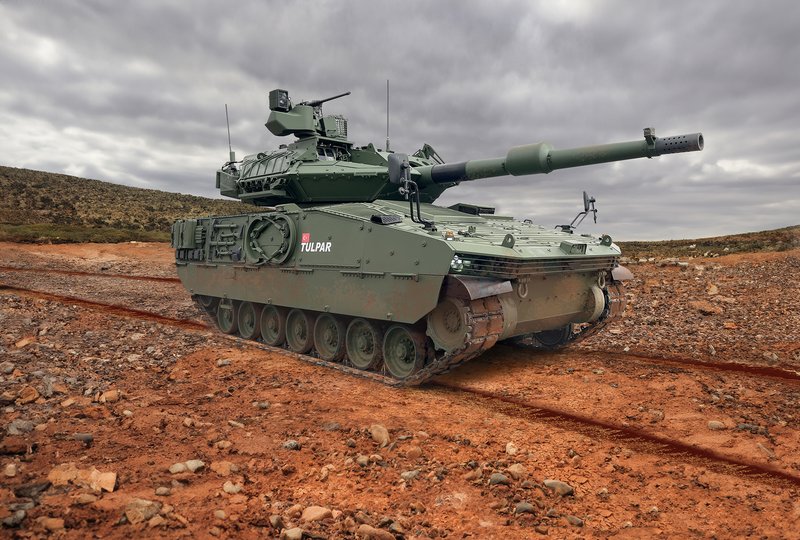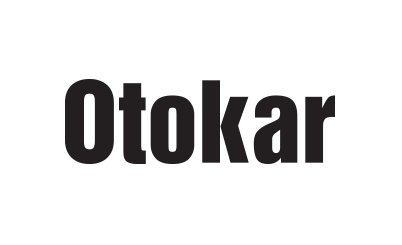Above: BMC's Altay MBT is finally in production for Turkish Land Forces Command. (Photo: BMC)
Foss Unglossed: Has Turkey's AFV industry reached the next level?
One benchmark of a solid national defence industrial base is the ability to design, field and mass-produce a high-end tracked AFV, from scratch with no technology transfer, consultancy or other outside help. Even in the digital age, you need good solid engineering to hang all your fancy subsystems on!
This special IDEF 2025 Shephard Views Newsletter is presented in partnership with Otokar
While nothing really happens in a national bubble anymore (even nominally “closed” states such as the DPRK must seek military know-how from elsewhere, whether legally or not…) I think Turkish industry is now firmly at the stage outlined above, with a couple of minor caveats (power trains, anyone?)
This has been some time coming. While many countries in Europe have well established capabilities for development of tracked AFVs (some of which have since been lost), Turkey started this process much later.

Explore armored vehicles and turret systems of Otokar, the global land systems manufacturer.
I am often accused of too much history in these my articles, but some background here is needed. Don’t worry, I’m not going all the way back to the Ottoman Empire!
After joining NATO, Turkey initially upgraded its fleets of tracked AFVs such as the US M48 main battle tank (MBT). More recently M60s have been fitted with new armour, active protection systems (APS) and remote weapon stations (RWS). Despite being museum pieces in the US, M60s still make up a large part of Ankara’s tank fleet. A tribute to the power of upgrades!

Above: FNSS's Kaplan Medium Tank fitted with a John Cockerill Defense C3105 two-person turret armed with a 105mm high-pressure gun. (Photo: FNSS)
Large numbers of the iconic M113 armoured personnel carrier (APC) were also upgraded, including replacement of the petrol engine by a more fuel-efficient diesel, and adding external stowage and a protected gunner’s station.
In an interesting sidelbar reflected in Turkish industry’s current offering of highly specialist vehicles, surplus MBTs were converted into recovery, engineer and bridge-laying variants, although some of the hardware required was supplied by countries such as Germany.
Notably, these upgrades were carried out in the facilities of the Turkish Army, rather. As with the US’s arsenals, the government retains its own plants to this day.
On the land side this includes the 1st Main Maintenance Factory Directorate which was the initial prime contractor for the T-155 Firtina self-propelled howitzer and its Poyraz ammunition resupply vehicle based on surplus M60 chassis. Firtinas are now supplied by private industry (BMC) but it is significant that the armed forces retain an industrial capability, even if it is now controlled by the state-owned ASFAT company. Turkey famously had to reevaluate its relationship with its military following certain events in 2016…
BMC is one of effectively three Turkish companies offering tracked AFVs for domestic and international customers. First out of the gate with such a platform was FNSS. It is often forgotten that it was originally set up to build the Turkish Infantry Fighting Vehicle (TIFV) as joint venture owned 49% by FMC (now BAE Systems) and 51% by industrial conglomerate Nurol Holding.
Nurol is in the final stages of acquiring BAE’s share and I wonder if this may lead to consolidation (or at least a “rebranding”) to align with sister company Nurol Makina, which produces its own line of AFVs, albeit at the smaller end of the scale.
Taken together, these companies, along with fellow supplier Otokar, probably have the widest range of AFVs in the world to offer to potential customers, with some types built overseas under technology transfers. One sign of industrial maturity is always when that transfer reverses direction. BAE’s divestment from FNSS is certainly more than symbolic!
The TIFV programme resulted in the Armoured Combat Vehicle (ACV) 15, of which 2,249 were delivered to the Turkish Land Forces Command (TLFC). FNSS followed up with the longer, heavier ACV-19, creating a modular family of vehicles that can be tweaked to meet different requirements – always a good idea when targeting the export market!
Indeed, ACVs have been sold to countries including Malaysia, the Philippines, Saudi Arabia and the UAE, fulfilling missions such as APC, command post, guided missile carrier and 120mm mortar.
More recently FNSS developed the Kaplan Medium Tank (MT) for export with Indonesia taking an initial batch of 18. Some have questioned the “medium tank” concept (including the US Army which had just cancelled its broadly equivalent M10 Booker as being not enough capability in too complex/heavy/expensive a platform) but it arguably makes more sense for an archipelagic nation with complex terrain to cross.
Was the sale of those 18 Kaplan MTs (so far) to Jarkarta worth the design effort? Illustrating that any such effort can be leveraged, FNSS recently disclosed it has developed a Kaplan APC which shares many components with the tank. The main difference here is moving the power pack to the front to leave space for dismounts at the rear.
This will apparently be manufactured in Indonesia by PT Pindad but details of the programme (such as how many have been ordered) are still unclear.
But there is yet another Kaplan – the Kaplan-10 tank destroyer is fully amphibious and fitted with FNSS’s ARCT (Anti-tank Remote Controlled Turret) armed with two laser-guided missiles. The latter can be either the Russian Kornet-E or the Turkish Roketsan OMTAS.
Turkey’s willingness to procure military equipment from Moscow has of course caused issues in the past (cf the F-35/S-400 saga) and this might even be a “soft” factor impeding sales of ifs own kit to some of its fellow NATO members. However, other potential customers prefer the flexibility.
Turkey is building up its amphibious capability (to what end I will let the reader draw their own conclusions) and has taken delivery of the ZAHA or Marine Assault Vehicle (MAV) in three versions, APC, command and recovery. These are deployed from the Turkish Navy’s new landing helicopter dock, Anadolu.

Above: The Kunduz Armoured Amphibious Combat Earthmover can undertake a variety of battlefield roles and is fully amphibious. (Photo: FNSS)
FNSS has also supplied a batch of 12 Kunduz Armoured Amphibious Combat Earthmovers to the TLFC and interestingly is to deliver six to the Philippine Army. Highly specialist vehicles can be tricky to export, as potential customers will usually want the baseline chassis to be something they already have in their fleet for commonality. Is this an exception that proves the rule or is a niche market being unlocked?
In addition to platform design and development FNSS has invested time and effort into a wide range of turrets and remote weapon stations (RWS), for installation on its own and others’ vehicles.
Taking just one example, the Saber is an evolution of the original turret fitted to the TIFV. This has undergone many improvements and is fitted to FNSS Pars 8x8 vehicles deployed by Malaysia and Oman, plus some vehicles supplied to the Philippines. Standard main armament is Northrop Grumman’s ubiquitous M242 Chain Gun.
FNSS has also invested in hybrid power packs, developing the Kaplan Hybrid which features a 400hp diesel and two PMSM motors each developing 397hp continuous and 617hp at peak.
In addition, the company has moved into uncrewed ground vehicles (UGVs) including the Shadow Rider which is a family of modular platforms which can be fitted with various weapon systems and operated in autonomous mode or by remote control. I remain somewhat skeptical of the potential of higher-end armed UGVs, but there is clearly demand out there and it seems no modern AFV portfolio is complete without one!
Based in its experience on TIFV/ACV and other projects, FNSS established a facility in Saudi Arabia to overhaul and upgrade M113-series models to extend operational lives and enhance survivability with additional armour.
It is also modernising TLFC IFVs and APCs with a capability enhancement and life extension programme, which improves protection, firepower and mission equipment.
Otokar, the largest manufacture of wheeled AFVs in Turkey, and is meanwhile expanding its tracked offering. Following an open competition, it was awarded the contract to develop the Altay MBT to meet the requirements of the TLFC.
The company duly built prototypes and pre-production examples, tested and qualified them and prepared the tank’s technical data package. There was then another competition for production, but this was won by BMC which then had no experience in the production of tracked vehicles.

Above: Otokar's Tulpar in medium tank configuration with a Leonardo HITFACT Mk II turret armed with a 120mm smoothbore gun and 7.62mm co-axial MG. (Photo: Otokar)
I think it’s fair to say that if the contract had stayed with Otokar the first production run of the Altay MBT would probably now have been completed. Like BMC, Otokar’s origins were in the manufacture of commercial vehicles, but it has built up decades of experience producing AFVs, evolving its capabilities over time. The “Tech bros” among you might disagree, but in my view this is always the best approach!
Undeterred by this, Otokar has completed prototypes of the Tulpar Modular Armoured Tracked Vehicle (MATV) which has a gross vehicle weight (GVW) ranging from between 28 and 45 tonnes and can be fitted with turbocharged diesels developing 700 to 1,100hp.
Tulpar was funded internally by the company and the concept behind it is to offer an IFV which can be deployed and operated together with the Altay. Variants include a medium tank (MT), APC, reconnaissance vehicle, command and control, air defence, ambulance, repair and recovery and mortar carrier.
The IFV has been evaluated in Kazakhstan where it completed firing and mobility trials on different types of terrain and was qualified in line with army requirements. The Kazakh example was armed with a Russian 30mm cannon integrated in a remote turret.
The MT was originally fitted with a John Cockerill Defense turret armed with a 105mm main gun but has been seen recently with a Leonardo HITFACT Mk II turret toting a NATO 120mm smoothbore weapon. This has been shown in Saudi Arabia and Brazil, where it has been offered to the army and marines as an MBT replacement. According to Otokar “is one of the preferred solutions with firing trials to be conducted in 2025.”
Otokar has further developed the lighter Tulpar-S which is amphibious with a GVW of up to 17 tonnes, and powered by a 360hp diesel. It has also been pitched in numerous variants with different armament options.
Like FNSS, Otokar is investing in UGVs with the first being the Alpar, designed to undertake battlefield missions either autonomously or with a human in the loop up to a maximum range of 5km. It uses a hybrid-electric drive and can be fitted with a turret armed with an M242 Chain Gun.
According to Otokar it has a maximum speed of 70km/h and a range of 500km with a maximum payload of three tonnes. Another version under development is for the reconnaissance role with identical automotives and a new mission module featuring electro-optics and a multi-band jammer. This to my mind is a better use of uncrewed tech until one of you convinces me otherwise!
What then of the Altay? NATO now has only one experienced MBT supplier with an active production line – KNDS in Germany with its proven Leopard 2. So many countries have abandoned their MBT development capability, so a wider range of options is good for the market in general. So is Altay up to the task from a manufacturing perspective?
An initial batch of 250 was ordered by the TLFC and production is finally underway at BMC. While the issues behind the delays in ramping up seem to have been overcome, with first examples delivered this year, operational testing and service entry will be the true proof of the pudding, not to mention sustainment and support over the platform’s life cycle.
Wrapping things up, Turkish industry certainly offers a wide portfolio of tracked IFVs, including some specialist types rarely encountered outside the US, Russia or (these days) China. The technology is there, the products are there, the factories are there.
Exports though have been largely restricted to MENA “neighbours” and some regular repeat customers in Asia-Pacific. What we haven’t seen yet is a “breakthrough” sale of a high-end platform to another NATO member, of the kind achieved by the likes of Hanwha which is putting South Korean industry firmly on the map.
But does this matter? Having NATO’s second-largest army with four-figure AFV fleets as your home customer offers a strong starting point, and that Middle East/Asian customer base provides a proven basis for future sales, as do very healthy exports of smaller wheeled combat and security vehicles around the world. But I don’t think Turkish industry or government ambitions end there…











